23 start with N start with N
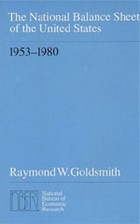
The most comprehensive and extensive study of national wealth ever attempted, The National Balance Sheet will be a rich resource for researchers and users of national accounts.

In National Saving and Economic Performance, edited by B. Douglas Bernheim and John B. Shoven, that task is addressed by offering the results of new research, with recommendations for policies aimed to improve saving. Leading experts in diverse fields of economics debate the need for more accurate measurement of official saving data; examine how corporate decisions to retain or distribute earnings affect household-level consumption and saving; and investigate the effects of taxation on saving behavior, correlations between national saving and international investment over time, and the influence of economic growth on saving.
Presenting the most comprehensive and up-to-date research on saving, this volume will benefit both academic and government economists.
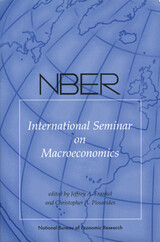
The distinguished International Seminar on Macroeconomics (ISoM) has met annually in Europe for thirty years. The papers included in ISoM 2006 discuss the relationship between prices and productivity in the OECD; monetary policy impact on inflation and output; implications of rising government debt; the relationship between consumption and labor market tightness; variation in real wages over the business-cycle; production sharing and business cycle synchronization in the accession countries; and pension systems and the allocation of macroeconomic risk.
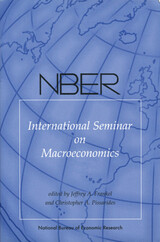
The distinguished International Seminar on Macroeconomics (ISoM) has met annually in Europe for thirty years. The papers in ISoM 2007 discuss interest setting and central bank transparency; expectations, monetary policy, and traded goods prices; public investment and the golden rule; the role of institutions, confidence, and trust in financial integration within EU countries; international portfolios with supply, demand, and redistributive shocks; transmission and stabilization in closed and open economies; capital flows and asset prices; and welfare implications of financial globalization without financial development.
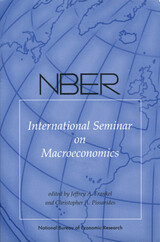
The distinguished International Seminar on Macroeconomics has met annually in Europe for thirty years. The papers in the 2007 volume discuss interest-setting and central bank transparency; expectations, monetary policy, and traded good prices; public investment and the golden rule; the role of institutions, confidence, and trust in financial integration within EU countries; international portfolios with supply, demand, and redistributive shocks; transmission and stabilization in closed and open economies; capital flows and asset prices; and welfare implications of financial globalization without financial development. The 2008 papers discuss the employment effects of workweek regulation in France; trade pricing effects of the Euro; reflections on monetary policy in the open economy; firm-size distribution and cross-country income differences; and exchange rates and the margin of trade.
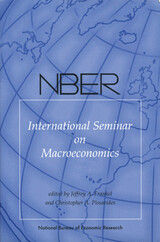
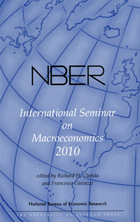
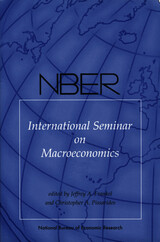
The distinguished International Seminar on Macroeconomics has met annually in Europe for over thirty years. The topics covered in this year’s volume fall into four categories: exchange rates, global business cycles, the financial crisis, and unemployment and the Great Recession. The chapters include a study of capital-account policies that are sometimes used to peg the real exchange rate, and an analysis of panel data from OECD countries that characterizes and explains movements in house prices. Other studies explore central issues to the financial crisis, such as its impact on trade flows, the effects of official bailouts, and the nature and evolution of unemployment during the Great Recession.
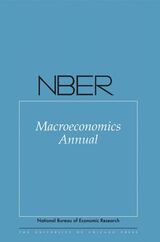
The NBER Macroeconomics Annual provides a forum for important debates in contemporary macroeconomics and major developments in the theory of macroeconomic analysis and policy that include leading economists from a variety of fields. The papers and accompanying discussions in NBER Macroeconomics Annual 2007 address exchange-rate models; implications of credit market frictions; cyclical budgetary policy and economic growth; the impacts of shocks to government spending on consumption, real wages, and employment; dynamic macroeconomic models; and the role of cyclical entry of new firms and products on the nature of business-cycle fluctuations and on the effects of monetary policy.
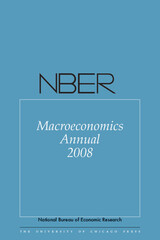
The NBER Macroeconomics Annual provides a forum for important debates in contemporary macroeconomics and major developments in the theory of macroeconomic analysis and policy. . The papers and accompanying discussions in NBER Macroeconomics Annual 2008, which
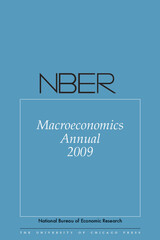
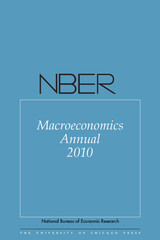
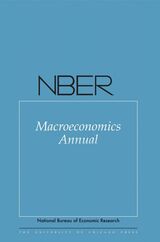
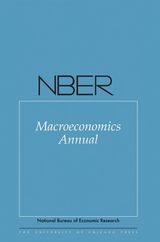
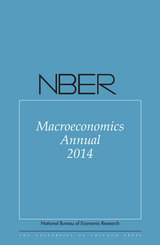
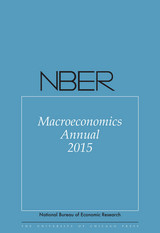
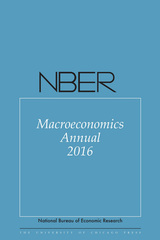
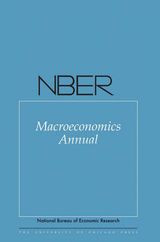
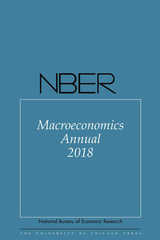
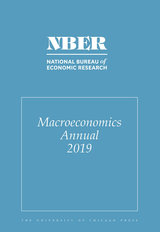
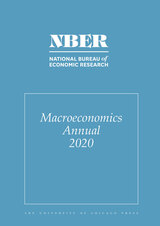
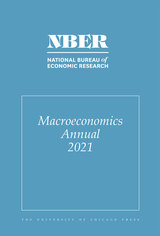
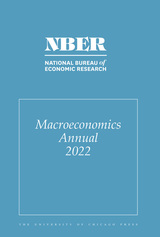
The NBER Macroeconomics Annual provides a forum for leading economists to participate in important debates in macroeconomics and to report on major developments in macroeconomic analysis and policy.
The NBER Macroeconomics Annual brings together leading scholars to discuss five research papers on central issues in contemporary macroeconomics. First, Andrea Eisfeldt, Antonio Falato, and Mindy Xiaolan document the rise of a new class of worker that receives part of its labor income as equity-based compensation, its role in the recent decline in the labor share of income, and implications for the returns to skilled labor and the implied capital-skill complementarity. Next, Michael Bauer and Eric Swanson focus on monetary policy shocks and argue the correlation between estimated monetary surprises and previously available information can be explained by uncertainty about the parameters of the monetary policy rule. Using new data and methods they find effects of monetary policy on macroeconomic variables that are much larger than previously estimated. Job Boerma and Loukas Karabarbounis provide a framework for quantitatively exploring the gap in wealth between White and Black Americans over the past 150 years and examine the effectiveness of reparations as a tool for closing this gap. Guido Menzio considers workers who do not have rational expectations, and whose “stubborn” beliefs change the response of wages to technology shocks, resulting in sticky wages. He finds that the larger the fraction of workers with stubborn beliefs, the more volatile unemployment is. Finally, Rishabh Aggarwal, Adrien Auclert, Matthew Rognlie, and Ludwig Straub investigate the growth—particularly in the United States—of private savings, current account deficits, and fiscal deficits after 2020. They argue that fiscal deficits lead to large and persistent increases in private savings and current account deficits.
READERS
Browse our collection.
PUBLISHERS
See BiblioVault's publisher services.
STUDENT SERVICES
Files for college accessibility offices.
UChicago Accessibility Resources
home | accessibility | search | about | contact us
BiblioVault ® 2001 - 2024
The University of Chicago Press









